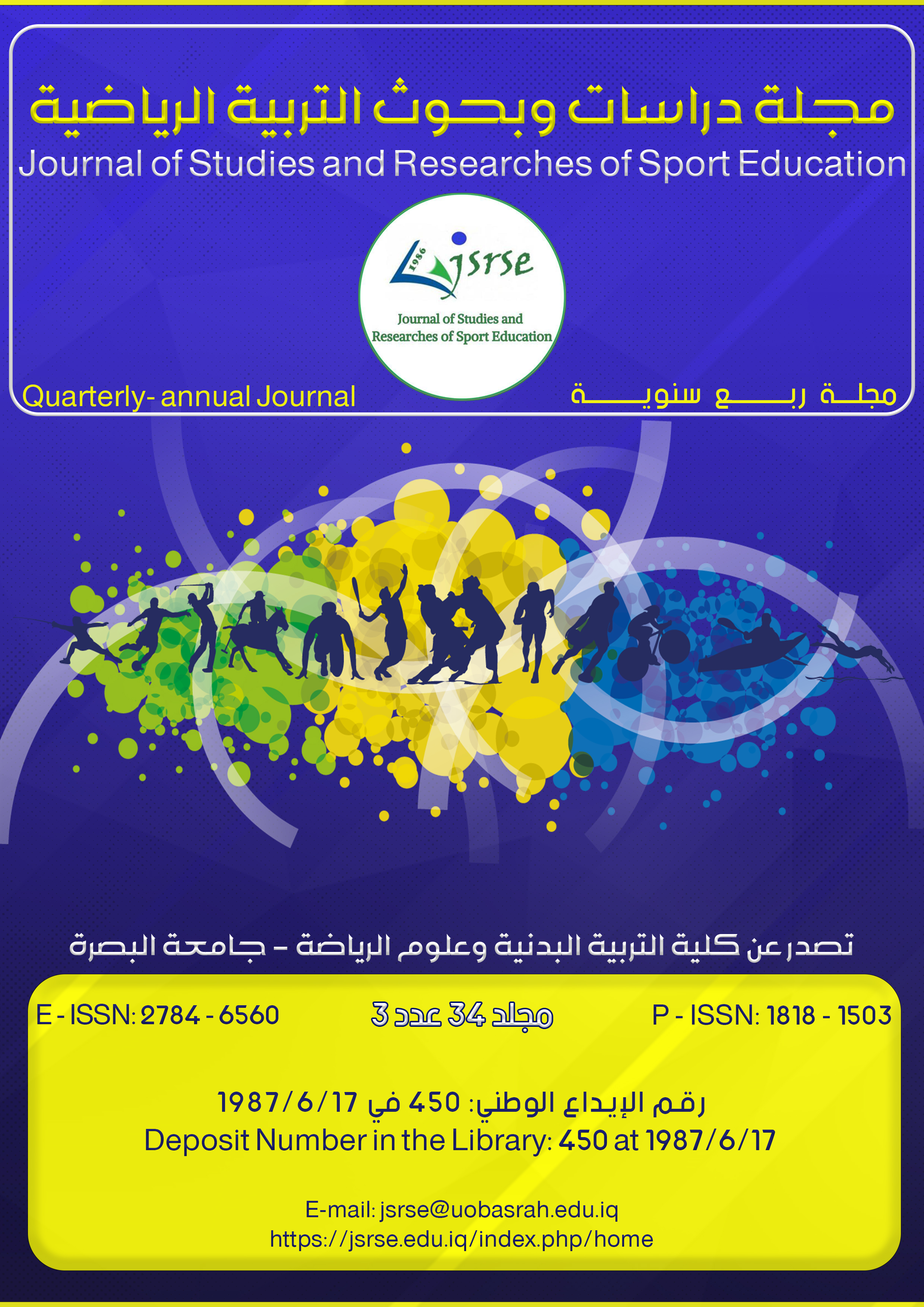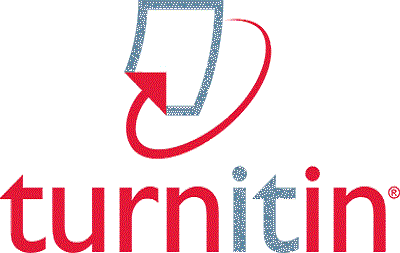تطوير مناهج التربية الرياضية في عصر الذكاء الاصطناعي
محتوى المقالة الرئيسي
الملخص
تهدف الدراسة: تطوير مناهج التربية الرياضية في عصر "الذكاء الاصطناعي" وتحسين عملية التعلم وتعزيز الأداء الرياضي للطلاب. تحليل الأداء الفردي من خلال استخدام التكنولوجيا المتقدمة والذكاء الاصطناعي حيث كان منهج الدراسة: استعمل الباحثون المنهج الوصفي المسحي وذلك لملاءمته لطبيعة الد راسة و تم تصميم الدراسة عن طريق جمع البيانات عن طريق الاستبيانات اما طرق جمع البيانات تم عن طريق المقابلة و توزرع الاستبيانات للمتخصصين في تطوير المناهج وطرق تدريس التربية الرياضية لمعظم اساتذة التربية الرياضية و بقسم المناهج وطرق تدريس التربية البدنية و بدول عربية واجنبية و عددهم (80) وتم التواصل عن طريق مواقع التواصل الاكاديمي (( Research Gate – Academe Gate- google scholar- scispace ai وكانت الاستنتاجات وجود فروق ذات دلالة إحصائية بين المتوسطين لصالح المجموعة التجريبية. كانت قيم حجم التأثير مرتفعة مما يدل على أثر إيجابي كبير للنظام الذكي في تحسين الطبيعة العلمية والمنهجية للتربية البدنية. مما يشير إلى فاعلية استخدام أنظمة تدريس ذكية في تدريس التربية البدنية وكانت التوصيات: تبني أنظمة التدريس الذكية والوسائط المتعددة في تدريس مقررات التربية البدنية نظرا لفاعليتها.، تطوير برامج تدريبية لتنمية مهارات تصميم المناهج لدى مدرسي ومصممي المناهج في كليات التربية الرياضية.
تفاصيل المقالة

هذا العمل مرخص بموجب Creative Commons Attribution-NonCommercial 4.0 International License.
المراجع
Ahmed, F., & Nasir Kiazi, Dr. A. (2022). Impacts of teachers’ Training on secondary school students’ Learning Attitude and performance. International Research Journal of Management and Social Sciences, 3(1), 132–141. https://doi.org/10.53575/irjmss.v3.1(22)14.132-141
Barr, M., & Wright, P. (2019). Training graduate teaching assistants: What can the discipline offer? European Political Science, 18(1), 143–156. https://doi.org/10.1057/s41304-018-0175-6
Barrera Robles, M., & Hinojosa Torres, C. (2017). Incidencia del proceso de la práctica profesional en las dimensiones de la formación docente de estudiantes de pedagogía en educación física. Pensamiento Educativo: Revista de Investigación Educacional Latinoamericana, 54(2), 1–15. https://doi.org/10.7764/PEL.54.2.2017.8
Cao, F., Xiang, M., Chen, K., & Lei, M. (2022). Intelligent Physical Education Teaching Tracking System Based on Multimedia Data Analysis and Artificial Intelligence. Mobile Information Systems, 2022, 1–11. https://doi.org/10.1155/2022/7666615
Capurro, R. (2020). The Age of Artificial Intelligences: A Personal Reflection. The International Review of Information Ethics, 28. https://doi.org/10.29173/irie388
Cardina, C. E., & James, A. R. (2018). Targeting Professional Development for Beginning Physical Education Teachers. Journal of Physical Education, Recreation & Dance, 89(7), 41–47. https://doi.org/10.1080/07303084.2018.1490220
Castelli, D. M., & Chen, A. (2018). Large-Scale Physical Education Interventions: Past, Present, and Future. Kinesiology Review, 7(3), 259–265. https://doi.org/10.1123/kr.2018-0021
Chen, Y., Gao, B., & Cao, H. (2022a). Teaching Intelligence System Based on the Cloud Platform of the Internet of Things and Its Application in Physical Education. Wireless Communications and Mobile Computing, 2022, 1–12. https://doi.org/10.1155/2022/7523529
Chen, Y., Gao, B., & Cao, H. (2022b). Teaching Intelligence System Based on the Cloud Platform of the Internet of Things and Its Application in Physical Education. Wireless Communications and Mobile Computing, 2022, 1–12. https://doi.org/10.1155/2022/7523529
Cheng, X. (2014). The Effectiveness of Multimedia Information Technology in Physical Education Model. Advanced Materials Research, 926–930, 4753–4756. https://doi.org/10.4028/www.scientific.net/AMR.926-930.4753
Xiaojing, S. (2022). College English Curriculum Setting and Evaluation Based on Language Curriculum Design Model——Taking English Translation Course as an Example. Frontiers in Educational Research, 5(2). https://doi.org/10.25236/FER.2022.050210
Cupido, D. X. M., & Norodien-Fataar, D. N. (2018). Teaching Assistants – a hit or a miss: The development of a teaching assistant programme to support academic staff at a university. Perspectives in Education, 36(1). https://doi.org/10.18820/2519593X/pie.v36i1.2
Daly, D. (2022). Using stories to tell curriculum or using curriculum to tell stories. Widening Participation and Lifelong Learning, 24(1), 187–197. https://doi.org/10.5456/WPLL.24.1.187
Dube, C. M., Mncube, D., & Uleanya, C. (2023). Exploring Preservice Teachers’ Classroom Management Skills during Teaching Practice: Perspectives of University Supervisors. Space and Culture, India, 11(1), 56–67. https://doi.org/10.20896/saci.v11i1.1313
Dvořák, D. (2023). Curriculum development. In International Encyclopedia of Education(Fourth Edition) (pp. 149–154). Elsevier. https://doi.org/10.1016/B978-0-12-818630-5.03024-4
Feng, X., & Liu, X. (2022a). Analysis on the Application of Computer Intelligence System in College Physical Education (pp. 1356–1361). https://doi.org/10.1007/978-981-16-8052-6_194
Feng, X., & Liu, X. (2022b). Analysis on the Application of Computer Intelligence System in College Physical Education (pp. 1356–1361). https://doi.org/10.1007/978-981-16-8052-6_194
Ghazi, M. A. (2023). Digital methodology in adopting innovation in physical education. Dar Al-Ebtikar for Publishing and Distribution.
Griggs, G., & Petrie, K. (2016). Education 3-13 – contemporary issues in international primary physical education. Education 3-13, 44(5), 499–501. https://doi.org/10.1080/03004279.2016.1169481
Hipkins, R., Cowie, B., Tolbert, S., & Waiti, P. (2023). Designing for empowering curriculum implementation. The New Zealand Annual Review of Education, 28, 38–48. https://doi.org/10.26686/nzaroe.v28.8273
Jia, Y. (2022). Modern Art Design Knowledge Teaching System Based on Cloud Computing Environment. 2022 International Conference on Education, Network and Information Technology (ICENIT), 294–297. https://doi.org/10.1109/ICENIT57306.2022.00071
Jomaa, H. Ben, Sghaier, D., & Mami, M. (2016). The Impact of Personal Experience on the Professorial Practice in Physical Education: A Case Study from Tunisia. Creative Education, 07(09), 1328–1334. https://doi.org/10.4236/ce.2016.79137
Jovanović, M., & Minić, V. (2019). TEACHERS OF PHYSICAL EDUCATION ON IMPROVING THE QUALITY OF TEACHING WITH CONTINUOUS ADJUSTMENTS TO THE CURRICULA. Facta Universitatis, Series: Physical Education and Sport, 651. https://doi.org/10.22190/FUPES180208059J
Kirchgasler, C. (2023). The Orders of Order: Curriculum Design and a Hauntonlogy of Efficiency (pp. 1–24). https://doi.org/10.1007/978-3-030-82976-6_26-1
Kopas-Vukašinović, E. M., & Savić, V. M. (2020). Designing Curriculum Content As a Factor of Education Quality. Узданица, 17(1), 261–271. https://doi.org/10.18485/uzdanica.2020.17.1.16
Kwon, J., & Park, J. (2023). Development of Flipped Learning Elementary Physical Education Class Design Model. Korean Journal of Sport Pedagogy, 30(2), 25–48. https://doi.org/10.21812/kjsp.2023.4.30.2.25
Lee, H. S., & Lee, J. (2021). Applying Artificial Intelligence in Physical Education and Future Perspectives. Sustainability, 13(1), 351. https://doi.org/10.3390/su13010351
Li, F. (2021). Information Teaching Platform of College Physical Education Based on Artificial Intelligence Technology. Journal of Physics: Conference Series, 1852(2), 022030. https://doi.org/10.1088/1742-6596/1852/2/022030
Liu, C., Dong, C., Li, X., Huang, H., & Wang, Q. (2023). Analysis of Physical Education Classroom Teaching after Implementation of the Chinese Health Physical Education Curriculum Model: A Video-Based Assessment. Behavioral Sciences, 13(3), 251. https://doi.org/10.3390/bs13030251
Macovei, R.-A., & Popescu, V. (2022). Conceptual Approaches Regarding the Added Value of Physical Education in the Integrated Teaching Process. Revista Romaneasca Pentru Educatie Multidimensionala, 14(3), 486–501. https://doi.org/10.18662/rrem/14.3/621
Mohamed Nasr El Din, M., & Mohamed Fathy Ali, H. (2017). Evaluation of the Role of Hidden Curriculum in Developing the Educational Process in Faculties of Physical Education. Assiut Journal of Sport Science and Arts, 2017(1), 186–216. https://doi.org/10.21608/ajssa.2017.138431
Muhammad, A. G. (2023). Planning physical education curricula within the framework of sustainable development and digital transformations. Al-Wefaq Publishing and Distribution House.
Nieveen, N. M., van den Akker, J. J. H., & Voogt, J. M. (2023). Curriculum design. In International Encyclopedia of Education(Fourth Edition) (pp. 198–205). Elsevier. https://doi.org/10.1016/B978-0-12-818630-5.03032-3
Qi, S., Li, S., & Zhang, J. (2021). Designing a Teaching Assistant System for Physical Education Using Web Technology. Mobile Information Systems, 2021, 1–11. https://doi.org/10.1155/2021/2301411
Salvador, B.-M. G.-M.-V. (2023). Integrating education for sustainable development in physical education: fostering critical and systemic thinking. International Journal of Sustainability in Higher Education.
Shen, X., & Guo, Z. (2022). Editable Hardware Design of Smart Physical Education Training System based on Body Image Positioning Algorithm. 2022 International Conference on Inventive Computation Technologies (ICICT), 973–976. https://doi.org/10.1109/ICICT54344.2022.9850685
Sheng, Z. (2022a). Java-Based Simulation Model Design for Cloud Computing Physical Education. 2022 International Conference on Knowledge Engineering and Communication Systems (ICKES), 1–4. https://doi.org/10.1109/ICKECS56523.2022.10059942
Sheng, Z. (2022b). Java-Based Simulation Model Design for Cloud Computing Physical Education. 2022 International Conference on Knowledge Engineering and Communication Systems (ICKES), 1–4. https://doi.org/10.1109/ICKECS56523.2022.10059942
Shulin, Y., & Jieping, H. (2022). Design and Implementation of Smart Teaching System Based on Microservice Architecture. 2022 IEEE 2nd International Conference on Power, Electronics and Computer Applications (ICPECA), 279–282. https://doi.org/10.1109/ICPECA53709.2022.9718846
Soltyk, O. (2017). The Peculiarities of Physical Education Teachers’ Professional Training: Foreign Experience. Comparative Professional Pedagogy, 7(4), 39–44. https://doi.org/10.1515/rpp-2017-0048
Špona, A. (2008). Socio-Pedagogical Problems of Modern Students’ Attitude Towards School. Journal of Pedagogy and Psychology “Signum Temporis,” 1(1). https://doi.org/10.2478/v10195-011-0002-0
Suryobroto, A. S., Setiawan, C., Nampai, U., & Dwi Marhaendro, A. S. (2022). A thematic analysis of teachers’ experience in teaching inclusive physical education. Jurnal Cakrawala Pendidikan, 41(3), 754–763. https://doi.org/10.21831/cp.v41i3.50531
system, E. m. (2020). Education management information system for tracking students’ academic progress in secondary schools: a case of Arusha region [Nelson Mandela African Institution of Science and Technology]. https://doi.org/10.58694/20.500.12479/902
Tang, Y., & Jiang, X. (2022). Applications of Artificial Intelligence and IoT in the Development of Sports Training Education Management. Wireless Communications and Mobile Computing, 2022, 1–8. https://doi.org/10.1155/2022/1061461
Thoriq, A., & Mahmudah, F. N. (2023). EDUCATION FOR SUSTAINABLE DEVELOPMENT (ESD): A SYSTEMATIC LITERATURE REVIEW ON CURRICULUM DEVELOPMENT STRATEGY DESIGN. European Journal of Education Studies, 10(5). https://doi.org/10.46827/ejes.v10i5.4803
Trendowski, T. N., & Woods, A. M. (2015). Seven Student-centered Principles for Smart Teaching in Physical Education. Journal of Physical Education, Recreation & Dance, 86(8), 41–47. https://doi.org/10.1080/07303084.2015.1075923
Wang, R., & Liu, J. (2021). Research on the Design of University Sports Teaching System Based on Cloud Computing (pp. 404–412). https://doi.org/10.1007/978-3-030-87900-6_47
Weikle, D. A. B., Stewart, M. C., & Simmons, S. (2022). Designing TA Training Programs for Broadening Participation. Proceedings of the 53rd ACM Technical Symposium on Computer Science Education V. 2, 1203–1203. https://doi.org/10.1145/3478432.3499148
Wen, B. (2020). The Application of Artificial Intelligence Technology in Physical Education (pp. 795–801). https://doi.org/10.1007/978-981-15-5959-4_98
Xie, Y. (2021). Application and Design of Computer Aided Instruction System in Aerobics Teaching. 2021 4th International Conference on Information Systems and Computer Aided Education, 1229–1233. https://doi.org/10.1145/3482632.3483120
Xu, M., Liu, D., & Zhang, Y. (2022a). Design of Interactive Teaching System of Physical Training Based on Artificial Intelligence. Journal of Information & Knowledge Management, 21(Supp02). https://doi.org/10.1142/S0219649222400214
Xu, M., Liu, D., & Zhang, Y. (2022b). Design of Interactive Teaching System of Physical Training Based on Artificial Intelligence. Journal of Information & Knowledge Management, 21(Supp02). https://doi.org/10.1142/S0219649222400214
Yang, X., & Liu, Y. (2022). An Integrated Taxonomy Method Using Single-Valued Neutrosophic Number MAGDM for Evaluating the Physical Education Teaching Quality in Colleges and Universities. Mathematical Problems in Engineering, 2022, 1–11. https://doi.org/10.1155/2022/2795788
Zhang, J. (2023). Application of Network Curriculum Platform Based on Cloud Computing in Physical Education Teaching (pp. 197–205). https://doi.org/10.1007/978-3-031-23950-2_22
Zhong, Y., Tan, H., & Peng, Y. (2019). Curriculum 2.0 and student content-based language pedagogy. System, 84, 76–86. https://doi.org/10.1016/j.system.2019.06.001
Zhu, G., Raman, P., Xing, W., & Slotta, J. (2021). Curriculum design for social, cognitive and emotional engagement in Knowledge Building. International Journal of Educational Technology in Higher Education, 18(1), 37. https://doi.org/10.1186/s41239-021-00276-9





 IASJ
IASJ CC-BY-4.0
CC-BY-4.0 turnitin
turnitin ISSN
ISSN DOAJ
DOAJ Crossref
Crossref GoogleScholar
GoogleScholar Orcid
Orcid